
|
| YBET | Hardware Training |
18. Acquisition: scanner and digital camera
18.1. Scanner - 18.2. Numerical camera - 18.3. Types of flash memories
18.1. Scanners
18.1.1. Introduction
For photo acquisition, 3 distinct techniques are used: hand scanner, insertion scanner (identical to the faxes for example) and flat. The hand and insertion scanners were largely supplanted by the scanners flat. These scanners can acquire of various sizes: A4, A4+ and for certain specific models, until A3 and even A2. The connection used by the scanners are external, parallel port SCSI and USB. Currently, the majority of the scanners are in port USB 1.1 or even since semi-2002 in USB 2.0. It is the only one which agrees to be connected hot (without starting again the computer) if the software is installed beforehand.
18.1.2. Driver.
The scanners all are practically controlled by a compatible program TWAIN. This allows any software image processing to use the scanner via this standard software interface. The driver is specific to each scanner.
Currently, the drivers are able of good more than the simple frame grabbing: automatic control of the nature of the originals (color, Black and White, texts, images, drawings...), auto correction of the images (improvement of the images while acting on the tone, colors and clearness), automatic management of the colors (faithful restitution of the colors on the printer and the screen). Some control whose Hewlett Packard partly cut out the document according to the type.
18.1.3. The resolution and the pallet.
The resolution of a scanner corresponds to the number of points which the scanner can acquire in a given surface. It is expressed in dpi (dot per inch) and can be different in width and length. This resolution is often defined of optical resolution and software resolution. The software resolution is a simple extrapolation software of the points. This does not give more details, but refines the differences in colors while making inflate the size of the file. For current work, a resolution of 200 dpi (even 150) is largely sufficient. Attention that a doubling of the size of the image compared to the original reduces the resolution by 2. In the event of enlarging, better is worth to double the starting resolution. For recall, the resolution of a screen is limited to 72 dpi. Images "Internet" (publication on site, sending by mall for catalogue...) must thus correspond to this resolution or even less.
Each scanner is also characterized by its pallet from colors. It is expressed in bit. The current current scanners have a pallet of 30 or 36 bits. 30 bits makes it possible to recognize more than one billion color, 36 bit makes it possible to recognize a little more than 68 billion colors. The professional scanners can go up to 42 bits. The pallet of color in levels of gray is generally the 1/3 of that color.
These 2 considerations are too simple to differentiate two scanners models. Indeed, with equivalent resolution, the quality of optics varies. As the scanning colors make pass the image by 3 filters of colors, the quality of these filters strongly influences the quality of the final image. Moreover, the clearness of contours of each points also influences the quality of the image. This explains why with equivalent characteristics, the scanners are strongly distinguished from the scanners the bottom-of-the-range one.
Even if that can seem odd, the impression in high quality with a resolution of scanning of 200 dpi gives a better result to the impression than a scanning of 600 dpi. For Internet publication, the usual resolution is of 72 dpi.
18.1.4. Descreening.
Because of their mode of impression, some supports such as the magazines or certain newspapers give effects of squaring to digitalization. The screnning consists in converting the images into a series of lines or points. To attenuate or make disappear this adverse effect of moire between the points and the pixels which makes the image digitized quasi unusable, the drivers of the scanners have all an option almost of descreening. As it acts of a software treatment interns with the scanner, the effectiveness and the duration of this treatment vary according to the models.
18.1.5. Operation of a flat scanner.
All the scanners flat follow the same principle of operation: a source of light moves on the surface of a document, the light produced by the source is considered and meets an electric photosensitive sensor. This sensor converts the light into electric signal, in fact an analog representation of the image which must be converted into digital signal using a converter. Before transferred to computer, the image passes through a micro controller for correction. In the case of scanners colors, each part of acquisition is reproduced in 3 specimens, one by color.
On the market, one finds 2 types of sensors, the most current is the CCD (charge coupled device or sensor with transfer of charge). Used by the data-processing cameras, it uses a technology with semiconductor and is formed many elements, all able to collect, store and transmit the charge electric received. Each element CCD corresponds to an element of the image, that is to say a pixel. When they are found exposed in the light of the source (generally a Xenon lamp), these elements are charged by photons. This creates a measurable electric charge which is preserved by the CCD until it is transmitted to an amplifier of exit where it is converted into electric signal. Sensor CCD is fixed and the advance of the light can involve a loss of the light signal, a slightly degraded image for example.
Diagram of a scanner CCD
The second type of sensor, the CIS (Contact Image Sensor) is the most used. Based on same technology that the CCD, the light do not walk on inside the scanner because the sensor is directly in contact through the pane with the support to be digitized. In this system, a cylinder lens makes converge towards the sensor the light emitted by red, green and blue diodes electroluminescent. These diodes, the lens and the sensor form part of the same device. This allows an own spectrum of colors and a greater chromatic fidelity, but the clearness of the images can be worse than those of the scanners with CCD. The scanners with CCD are generally faster than those with CIS. Indeed, a speed of digitalization too fast in CIS would make the image fuzzy.
Diagram of operation of a scanner CIS
As the scanners with CIS do not include mirrors, nor objectives, they are easily identifiable. Moreover, they are definitely less cumbersome and... definitely less expensive.
The signal collected by sensors (CCD or CIS) is transformed into digital electric signal. As my various nuances of colors are not perfectly linear in analogical signal, all the work of this converter is to reproduce the image most accurately.
The microcontroller, specialized processor, supervise all the processes and ensure the conversion of the rough image into a comprehensible format by the software of final improvement of images. In addition to the format of the image, the microcontroller must also make sure that the software includes/understands the images. Indeed, the majority of the software of treat images treats them in 8 bits by colors, whereas the scanners use 10, 12 or even 14 bits.
18.1.6. The interface.
The interface of the scanner towards the computer can be SCSI (generally SCSI 2), parallel or USB. For recall, in parallel and SCSI, the apparatus must be connected before starting the PC, only USB is plug & play.
The new scanners (December 2002) are also compatible USB 2.0 with a practical speed of 15 MB/s. For recall, USB 1.1 is compatible ascending with ports USB 2.0. In light, you can connect a peripheral USB 2.0 on a port USB 1.1 and screw poured. Nevertheless, peripherals USB 1.1 will function only with the speed of a port USB 1.1 (1,5 MB/s) on a port USB 2.0, scanners USB 2.0 will function only with speed USB 1.1 on a port USB 1.1.
18.1.7. OCR.
The majority of the scanners are associated a software of character recognition. This software makes it possible to treat texts digitized like texts usable by Word, WordPro... The choice of the source language is of primary importance since in the event of difficulty, the software of OCR tends to check the word nearest. In any event, a recognition to 100 % does not exist, even with complete versions of the software (the software provided with the scanner is generally in lit version). Moreover, the size of character and the police force strongly influence the recognition.
18.2. Digital camera and video
The light signal is transmitted to a called photosensitive cell CCD (Charged Coupled Device) which transforms energy (light) into a series of pulses. The electric charge is directly proportional to the collected light. A zero load produces black, a peak load producing of the white. This stage, the CCD produces all the nuances of gray (the number of levels of gray nevertheless is reduced by the manufacturers). By breaking up the contents into red, yellow and blue by filters of colors, one obtains for example: 256 nuances blue * 256 nuances of green * 256 nuances of red = 16.777.216 combinations of possible colors.
Current devices implanted techniques additional picture is taken as for example: Zoom optics, software: as for a scanner, optical zoom is the real zoom (best-performing accept up to 24 X, a standard digital allows generally 5 X). Software zoom uses an extrapolation of the points, allowing a Visual improvement of the image for printing but losing a real return of the photo, while increasing the size of the file.
- LCD display for or even directly the photos on the camera or even to configure.
- Macro mode: this function allows to take photographs of objects small and close using the standard zoom. The macro photography mode uses specific equipment, for photography of small objects, insects,... by far
- Panoramic mode: allows you to take multiple photos a panorama and paste between them.
- Camera mode: allows you to shoot short films with your camera, including sound. Anti-movement: AutoCorrect when moving the device mode shooting.
- Additional zoom (Telephoto). can increase the internal zoom level by adding additional zooming as in standard cameras.
The most known technique determines the color by interpolation of the neighboring pixels: if the red, blue and yellow pixels give the same value, they become gray. If the pixels red is maximum and 2 the other null ones, the color is red, and so on. Unfortunately, this solution has some limits for special colors.
The new photo digital are called MEGA PIXEL with more than one million (Mega) of pixels in the CCD, by opposition with the apparatuses known as software-display. Of what does consist the MEGA-PIXEL? To obtain the real resolution of the image, it is necessary to take the maximum resolution given by the manufacturer (for example 1600 * 1200), to divide it by 4 (a red filter, 2 green filters and a blue filter), which gives the real mega pixel. In our example, we obtain 0,48 mega pixels instead of 1,9 mega pixels. The size of each pixel is 0,15 microns, while multiplying by 4, one obtains the real size is 60 Microns per bit (not). In general, such a pixel is coded on 12 bits, which for an image quickly gives files of 12 MB. A diapositive of 35 mm contains 100 times more information. This thus gives an image of 400 MB. From the physical point of view, the apparatus is thus largely above the photo numerical equipments.
If Sony developed some models of numerical equipment preserving the photo on diskette directly inserted in the apparatus, this technique was abandoned, too slow, but especially of too low capacity. The safeguard of the photographs is done on memories flash. These memories are rewriteable, but preserve the contents when they are not fed. If one finds apparatuses containing of the memories of 8 MB, the new apparatuses go up to 20 MB (one can add some). That is to say a camera containing 2,3 million sensors, this gives a maximum resolution of 1760 * 1168 pixels, the equivalent of a format of impression of 15 X 22 cm in 200 dpi or 20 X 30 cm (A4) in 150 dpi. With a memory flash of 20 MB, you can store 32 images in high resolution, and up to 245 in low resolution.
18.3 Types of Flash memory
If Sony has first developed some models using floppy disks inserted into the device, this technique is replaced by flash memories, faster and much larger capacity. Flash memory allow reading and writing as a RAM, but keep as a ROM information in the absence of power. On the other hand, the number of entries is limited to a few thousand. If we find appliances containing the memoirs of 64 MB, the new devices accept up to 8 GB (you can add following types below). 4 GB memory allows for example to save 1240 photos in 1880 X 2130 pixel in jpg (device 4 Mega pixels).
18.3.1. Memory Stick (Sony, Scandisk)
Developed from 2000, this memory type series is almost manufactured by Sony. The standard dimensions of the box are 50.0 mm (width) x 21.5 (height) x 2.8 mm (thickness). It includes flash memory and controller. The maximum current capacity reaches 4 GB Pro
Duo.
There are several types of Memory stick:
- Standard: 14.4 Mb/s transfer speed (19.6 Mb/s maximum)
- Pro: incompatible with the standard version, it offers superior transfer speeds: (15 mbps standard but up to 160 Mbps maximum).
- Magic stick Duo: derived from the standard version, it increases the capacity of the media (in remaining compatible). Inserted in a standard player, it accesses only half the capacity. It is based on the Pro
- Magic Stick Pro Duo, derived from the two previous versions with lower dimensions. Adapters (model Mark 2 Sony) allow to use them in older devices.
- With Magic Gates, Sony introduced a coding (data protection).
18.3.2 Secure Digital (SD - SDHC), the most common.
 Developed from the early 2000s by SanDisk (yet), Matsushita Electronic and Toshiba, the SD Card is also used in
cameras, digital records, PDA... The dimensions are standardized: 24 mm high, 32 mm wide and 2.1 mm thick. The transfer of information (serial mode) uses a 9-pin
connector
Developed from the early 2000s by SanDisk (yet), Matsushita Electronic and Toshiba, the SD Card is also used in
cameras, digital records, PDA... The dimensions are standardized: 24 mm high, 32 mm wide and 2.1 mm thick. The transfer of information (serial mode) uses a 9-pin
connector
In the standard version, the transfer speed is 2 MB/s. Since 2006, the version Secure Digital High Capacity (SDHC) is used for more than 2 GB capacity memories. With these memory cards, new standards handle the transfer speed to 2 Mbps (class 2), 4 MB/s (class 4) and 6 Mb/s (class 6).These submissions include protection against piracy (CPRM - Content Protection Media) when copying music, video,...: maximum limitation to 3 copies
The MicroSD version is identical. Smaller size (11 mm x 15 mm x 1 mm), it is used for mobile phones. They can be used in digital cameras via an adapter.
18.3.3. Compact Flash
 The oldest (1994) is the Compact Flash (CF for short). Here, too, the controller is included in the box. Two types are developed, types I (3.3 mm thickness) and types (layers of 5 mm). Other dimensions of 42.8 mm wide and 36.4 in height. Standard capacities range up to 8 GB, even if the standard accepts up to 137 GB. This pattern
disappears.
The oldest (1994) is the Compact Flash (CF for short). Here, too, the controller is included in the box. Two types are developed, types I (3.3 mm thickness) and types (layers of 5 mm). Other dimensions of 42.8 mm wide and 36.4 in height. Standard capacities range up to 8 GB, even if the standard accepts up to 137 GB. This pattern
disappears.
Developed prior to the PCMCIA standard, it uses the same technology of transfer (in parallel mode) if only the number of pins is 50 instead of 68. The PCMCIA connector accepts also directly the Compact Flash. The voltage (3.3 Volts or 5 volts depending on the type) is selected automatically when inserting the card.
18.3.4 XD Picture Card
 Marketed since 2002, the Xd Picture cards are primarily used by digital cameras Olympus and Fujifilm brand but also in MP3 players and dictaphones. Compared to other types of submissions, the controller is not integrated, it is included directly in the device that uses (so higher price). Intended as a replacement for the SmartMedia, remain compatible by using an
adapter.
Marketed since 2002, the Xd Picture cards are primarily used by digital cameras Olympus and Fujifilm brand but also in MP3 players and dictaphones. Compared to other types of submissions, the controller is not integrated, it is included directly in the device that uses (so higher price). Intended as a replacement for the SmartMedia, remain compatible by using an
adapter.
Released in 2005, the type M uses MLC (Multi Layer Cell) submissions to increase the capacity up to 8 MB, unfortunately at the expense of the playback speed / writing over the first version.
Outputs from 2006, type H uses a SLC (Single Layer Cell - single layer) memory. It is the most rapid (5 MB/s read for 4 write) but its capacity is more limited than the type M. All numerical devices accept the standard type. On the other hand, incompatibilities exist between types H and M at the levels of readers. The current maximum size is 2 GB, the standard provides up to 8 GB. The dimensions are 25 mm wide, 20 mm high with a thickness of 1.7 mm, with a weight of only 2 grams. The connector uses 18 pins with a supply voltage.
In relation:
- Course: graphic card The operation of the graphics accelerators for computers
- Training: the printer Technologies of impression, types, maintenance...
- Monitors Cathode ray, flat tube monitor
|
The continuation of the hardware 1 course > 19. Sound Board |
The hardware training first year (PC and peripherals). The Hardware training second year (networks, servers and communications)
Competences with the service of quality.